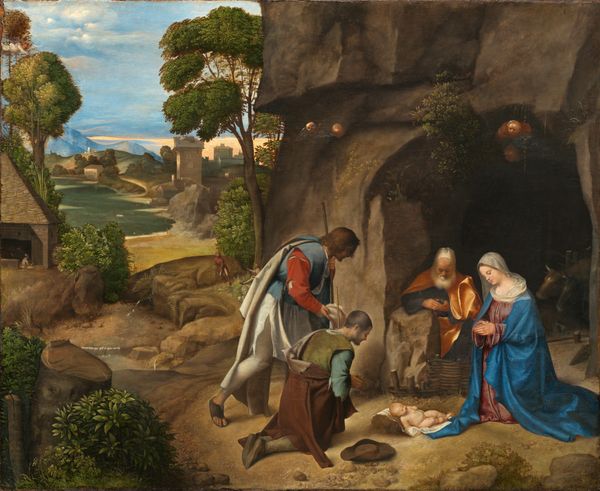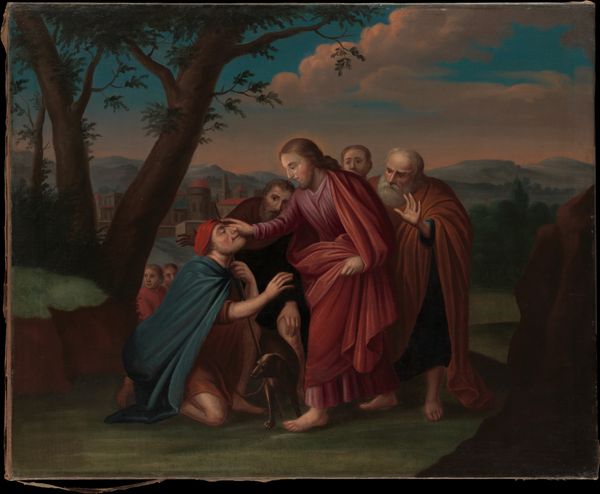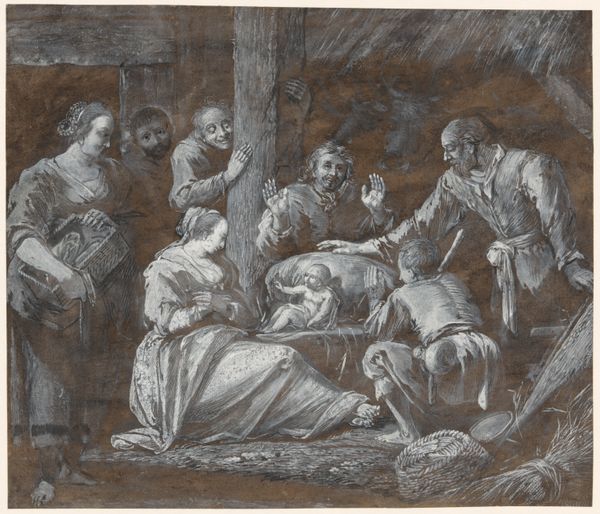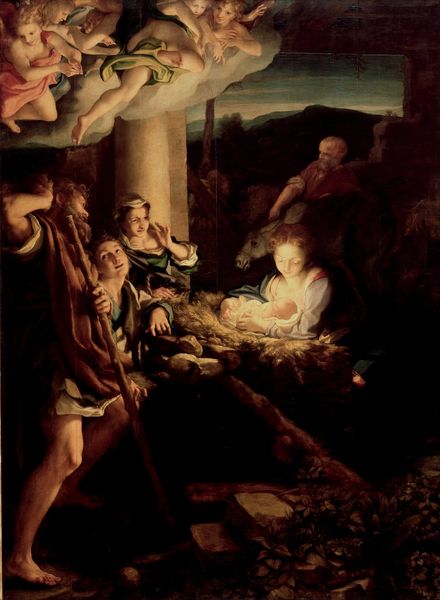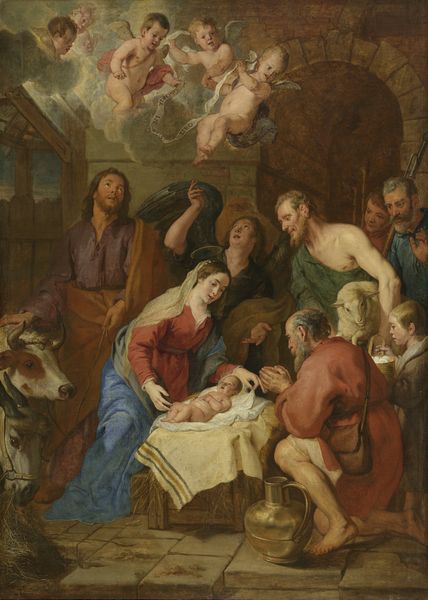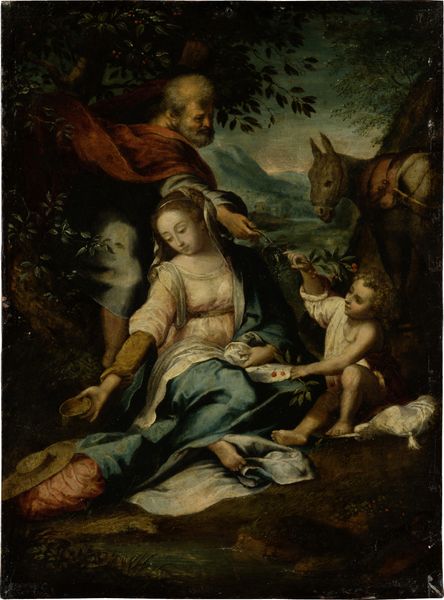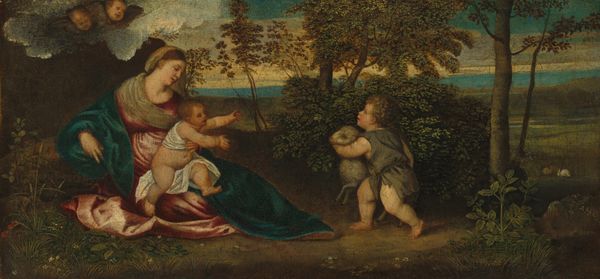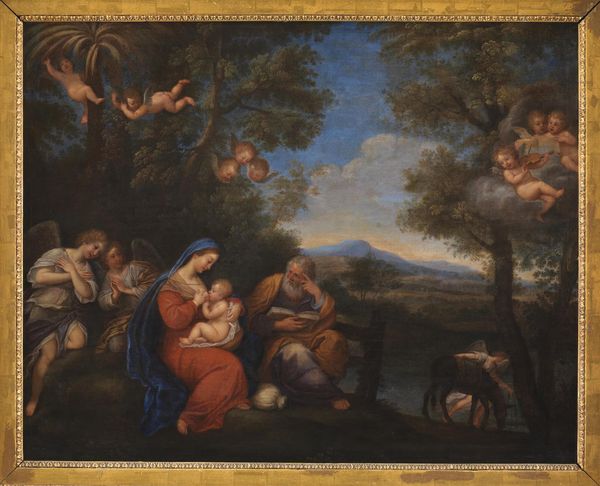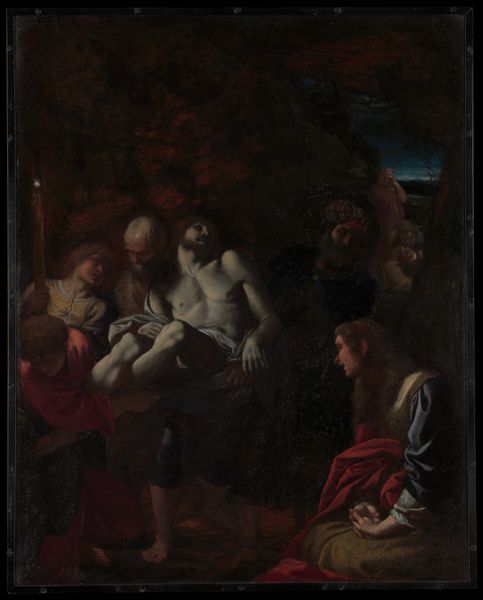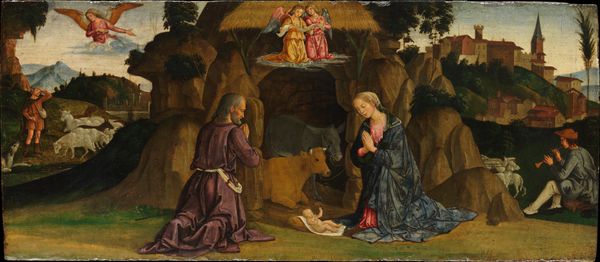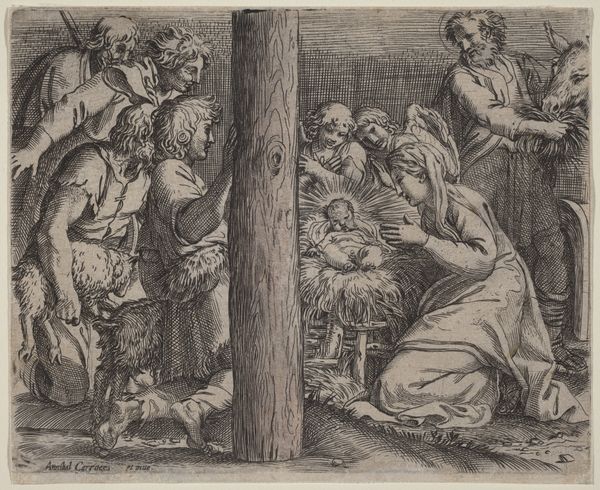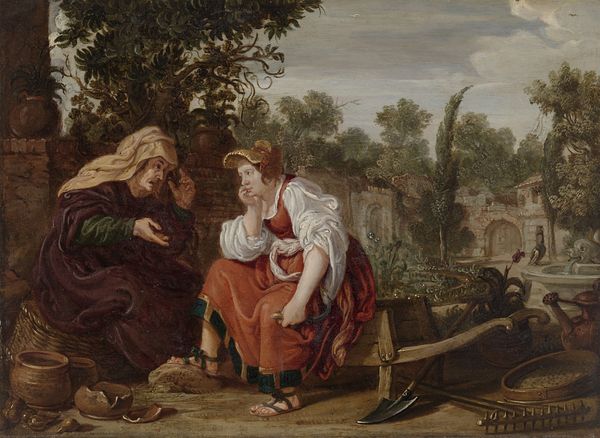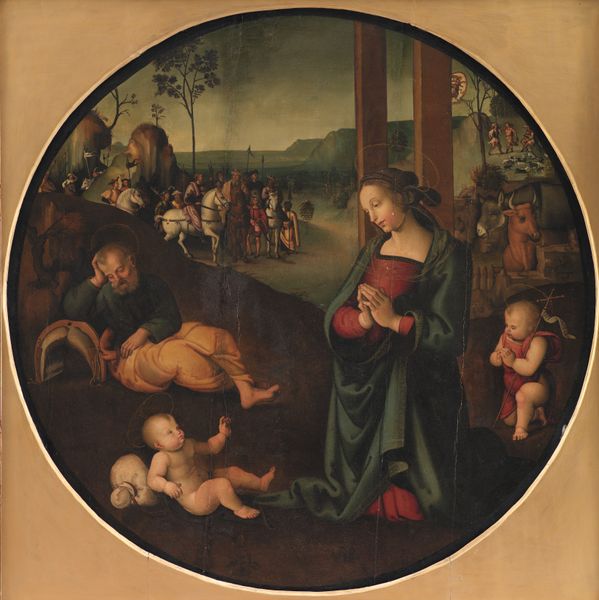
The Adoration of the Shepherds 1535 - 1540
0:00
0:00
oil-paint
#
oil-paint
#
figuration
#
genre-painting
#
history-painting
#
italian-renaissance
#
mixed media
Dimensions: 12 3/8 × 16 1/8 in. (31.4 × 41 cm)
Copyright: Public Domain
Curator: Here we have Girolamo da Carpi’s oil on panel, "The Adoration of the Shepherds", dating from about 1535 to 1540. What's your immediate take on this one? Editor: It’s… theatrical, almost stage-lit. The drama is cranked up with that single light source breaking through the darkness. I notice also a tension between idealized figures and rather… earthly surroundings. Curator: Precisely. It is a potent piece of Italian Renaissance painting. The shepherd's adoration here isn’t just about reverence; it’s also very much about humanity's raw connection to the divine. Notice the use of impasto; that tangible materiality… Editor: That materiality underscores everything! Look at those shepherds practically falling over themselves, straining, and leaning, and I keep wondering about Carpi's choice of materials – the cost of pigments, where the panel came from, and what kind of workshop he was running. Those things shape our encounters, too. It makes one wonder: what did those raw materials cost in terms of labour? Curator: Absolutely. We're grounded in the practical realities of creation. Still, observe how the landscape plays almost a character too, sheltering this momentous event. It seems at once very present yet timeless, almost dreaming its way to this specific moment. And consider the figures' gestures... Editor: Gestures that highlight the social relationships depicted within the narrative and across social groups—between those who made the oil, the shepherd's skin tone in contrast with other, nobler materials. And I like that you pointed out the landscape, because you can appreciate the labor involved not only in grinding stones for the oil paints, but hauling rocks as well... Curator: Yes, these visual components all culminate into something transcendent while staying undeniably human and made, as you say. Thank you! Editor: And thank you for the fresh insights as to the historical perspective, it allowed us to understand it more deeply!
Comments
No comments
Be the first to comment and join the conversation on the ultimate creative platform.
